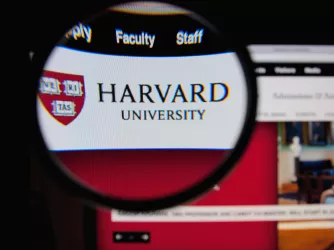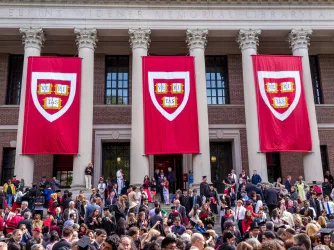Table of Contents
Professor Donald Downs Discusses ‘Religion in the University’
Last Monday, University of Wisconsin at Madison Professor Donald A. Downs had an interesting post at the National Association of Scholars forum, “Religion and the University.” Professor Downs divides the history of the American university into three eras: the proprietary, the liberal, and the post-liberal. The proprietary university, to use the American Association of University Professors’ term, was defined by its adherence to a specific conception of truth and its mission to pass on that idea. It was replaced by the liberal university, with a research focus spurred by scientific advances. The liberal/research university believed in the validity of universalism and the importance of debate and dialogue to discover truth. This in turn has been replaced by the post-liberal university, which “denies the validity of universalism and supports restrictions on speech and academic freedom in the name of promoting sensitivity, diversity, and a sense of inclusion.”
In many ways, the campus wars are a battle between the latter two conceptions of the university. The liberal university believes in the value of “free speech and academic freedom as indispensable means to the pursuit of truth; intellectual honesty and objectivity; and the essential universality of knowledge and truth.” The post-liberal university is an about face from the liberal university’s search for truth. Speech codes and campus restrictions on certain views are acceptable when advancing the post-liberal conception of truth. In this way, Downs argues, the post-liberal university is similar to the proprietary university of yesteryear.
[S]ome critics have observed that the drive for diversity itself has taken on a quasi-religious character on some campuses. But “diversity” seldom means intellectual diversity, as post-liberal universities are often characterized by a tiresome orthodoxy of opinion.
In this “new proprietary university,” the post-liberal university has developed an abiding animus for religious views manifested as rigid intolerance. The suppression of political speech over the last few decades produced many cases that typify the clash between the liberal and the post-liberal university. Recently, religious groups and students have objected to the strictures of the post-liberal university on the same grounds as those advocating political liberty. These cases generally involve denial of recognition for explicitly religious groups, such as the debacle with the Roman Catholic Foundation and other religious groups in the University of Wisconsin system (FIRE reported on it here, here, here, and here), or the restriction of Bible studies by Resident Assistants, such as the case of Lance Steiger at the University of Wisconsin at Eau Claire.
Downs outlines three reasons for the rise of religious liberty cases:
First, religion is an important aspect of life in America, so it was probably only a matter of time before religious movements made their voices felt on campus. Second, religious groups are aware of universities’ commitments to diversity and ask why diversity should not include their voices. Third, in 1981 the Supreme Court began crafting a line of free speech jurisprudence that treated religious viewpoints on campus as another species of free speech that is subject to the full protection of the First Amendment. Therefore, religious expression is protected by the anti-viewpoint discrimination doctrine, which prohibits unequal treatment of expression based on the viewpoint of the speaker.
Two Supreme Court cases are salient on this issue, Rosenberger v. Rector and Visitors of the University of Virginia (1995) and Board of Regents of the University of Wisconsin System v. Southworth (2000). In Rosenberger, the Court ruled that the Establishment Clause did not forbid a university from funding a Christian group. Similarly, in Southworth, the Court declared constitutional the distribution of student fee money to student groups as long as the distribution was “viewpoint neutral.” Essentially, Establishment Clause arguments against the recognition or funding of religious groups using student fees were made obsolete. Quoth Downs:
Under Southworth, such funding of student groups is constitutional if it is designed to further the educational mission of the university. Accordingly, First Amendment jurisprudence now assumes, in effect, that religious consciousness has a proper place among the intellectual values of the university—at least in the domain of student group activity.
The challenge of religious groups is that they often have membership criteria that violate university antidiscrimination regulations. Downs notes Christian Legal Society v. Walker, et al. in the Seventh Circuit Court of Appeals, where the Christian Legal Society (CLS) prevailed in a lawsuit against Southern Illinois University (SIU). SIU had denied official recognition to a campus CLS chapter, and CLS claimed a violation of their freedom of association. FIRE submitted an amicus brief in the case arguing that freedom of association is an essential First Amendment right, which was ultimately the opinion of the court.
Downs remarks that the religious liberty controversy is unique because it questions both the liberal and post-liberal conceptions of the university. In a way, religious conceptions are a throwback to the proprietary university in their transcendence of strict empirical analysis, although they do not preclude the values of the liberal university. At the same time religion, posits an exclusionary view on truth like the post-liberal university, albeit a view clearly in conflict with that of the post-liberal university. The post-liberal university’s preoccupation with identity politics is not unlike religion’s emphasis on exclusionary membership, albeit a membership based on criteria out of vogue in the post-liberal university.
Whatever the deeper philosophical and social issues involved, Downs accurately notes that FIRE has staked out a position at the forefront of the battle for religious liberty. FIRE believes freedom of conscience and freedom of association are rights essential to human dignity and individual liberty. Student groups must be allowed to define the terms of their own mission and the stipulations of their own membership. College Democrats cannot be required to admit Republicans and the Campus Conservatives cannot be required to admit liberals. Christian groups must be allowed to be Christian; Muslim groups must be allowed to be Muslim; and Buddhist groups must be allowed to be Buddhist.
Recent Articles
FIRE’s award-winning Newsdesk covers the free speech news you need to stay informed.

Revoking Harvard’s tax-exempt status will threaten all nonprofits

Grandpa’s advice for the new wave of American censors

FIRE POLL: Only 1/4 of Americans support deporting foreigners for pro-Palestinian views
